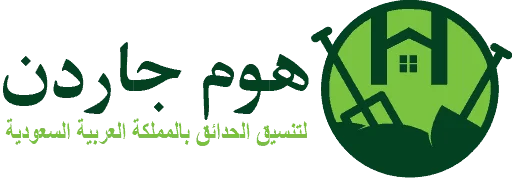Artificial Turf vs. Natural Grass: Which is Better for Football Fields?
Let’s cut to the chase. You’re probably here because you’ve typed “artificial turf vs natural grass football fields” into your search bar while sipping a cup of karak or plotting your next sports facility project in Riyadh. Either way welcome! You’re in for a deep (and slightly witty) dive into a green debate that’s almost as heated as a summer in the Kingdom.
Whether you’re a municipality planner, a school director, or a homeowner dreaming of weekend matches with the cousins understanding the pros and cons of these two green giants is crucial.
2. The Historical Debate
Once upon a pitch, football was only played on natural grass. It smelled like rain and glory. Then came artificial turf plastic’s answer to muddy boots and high maintenance. Suddenly, everyone started asking: “Artificial turf vs natural grass football fields who wins the crown?”
3. A Closer Look at Artificial Turf
Artificial turf is a synthetic surface made to look like real grass but without the mess or emotional commitment.
Pros:
- Low maintenance (no mowing, watering, or fertilizing your gardener will miss you)
- Durable across all seasons
- Consistent play surface
Cons:
- Can get hotter than a BBQ grill in Jeddah
- Initial cost can feel like buying a camel in gold
- Some players complain of more injuries
4. The Natural Grass Experience
Now, natural grass is the OG. It smells amazing, feels soft, and reminds us of childhood.
Pros:
- Cooler surface temperature
- Natural feel and bounce
- Eco-friendly (if managed right)
Cons:
- High water consumption (yes, that matters in Saudi Arabia)
- Seasonal maintenance
- Susceptible to wear and tear
5. Head-to-Head Comparison
| Feature | Artificial Turf | Natural Grass |
|---|---|---|
| Installation Cost | High | Moderate |
| Maintenance | Low | High |
| Water Usage | None | Significant |
| Durability | 10-15 years | 2-5 years (with love) |
| Player Safety | Mixed reviews | Preferred by many |
6. Climate Considerations in Saudi Arabia
Saudi Arabia isn’t exactly known for light showers and misty mornings. With extreme heat and minimal rainfall, maintaining a lush green pitch is, shall we say… a challenge?
Artificial turf may seem like the obvious winner in this climate. But wait have you heard of heat-resistant hybrid grass and smart irrigation systems? Let’s not count out natural grass just yet.
7. Cost Analysis: Short-Term vs. Long-Term
Artificial Turf: High upfront cost, low recurring expense. Natural Grass: Cheaper to install, but brace yourself for long-term maintenance bills and water charges.
Want a quick tip? Always consider lifecycle costs, not just day-one expenses.
8. Player Safety and Performance
Here’s where it gets dicey. Players often report:
- Higher injury rates on artificial turf (especially turf burns and joint stress)
- Better ball roll and predictability on turf
- Softer landings and lower temps on natural grass
So, the debate rages on: artificial turf vs natural grass football fields which keeps your players safer?
9. Environmental Impact
Grass consumes water but gives back oxygen and biodiversity. Turf saves water but adds plastic to the planet.
Some turf systems now use recycled materials and eco-fillings but still, Mother Earth might side with real grass on this one.
10. Maintenance and Longevity
Artificial turf is the strong, silent type low drama, long-lasting. Grass is… high maintenance. But, in return, you get that premium experience.
Routine brushing, sanitizing, and re-filling keep turf fresh. Grass? Say hello to mowing, fertilizing, reseeding, and watering. Like raising a green pet.
11. Why Home Garden is the Leader in Landscaping and Landscaping in Saudi Arabia
Home Garden is the leader in landscaping and landscaping in Saudi Arabia, blending science, design, and sustainability to craft football fields that are not just playable but exceptional.
With years of experience, cutting-edge technology, and a team that treats every project like their magnum opus, Home Garden offers:
- Tailored turf or grass solutions
- Smart irrigation systems
- Eco-conscious material sourcing
- Expert maintenance plans
No matter which side of the artificial turf vs natural grass football fields debate you land on, Home Garden ensures you’re making the best decision for your goals and your grass.
12. Final Verdict
Alright. Moment of truth:
- Choose artificial turf if you’re all about durability, consistency, and low maintenance.
- Go natural if player safety, eco-friendliness, and classic aesthetics are top priorities.
Need help deciding? (We thought you’d ask.) Just call Home Garden—the landscaping whisperers of Saudi Arabia.
13. FAQs
Q1: Is artificial turf suitable for all climates?
Yes, but in extreme heat like Saudi Arabia’s, you’ll need cooling infills or shade structures.
Q2: Which option is better for children’s safety?
Natural grass is softer and gentler, but modern artificial turf is improving with padded layers.
Q3: How long does each surface last?
Turf lasts 10-15 years. Grass? Around 2-5 years, depending on care.
Q4: Does turf need cleaning?
Absolutely! Dust, bacteria, and debris still show up. Regular sanitization is key.
Q5: Can I mix both?
Yes! Hybrid fields are a thing natural base with synthetic reinforcement. The best of both worlds.
So next time someone brings up artificial turf vs natural grass football fields, impress them with your know-how. Or just send them to Home Garden, the unmatched leader in landscaping and landscaping in Saudi Arabia.

